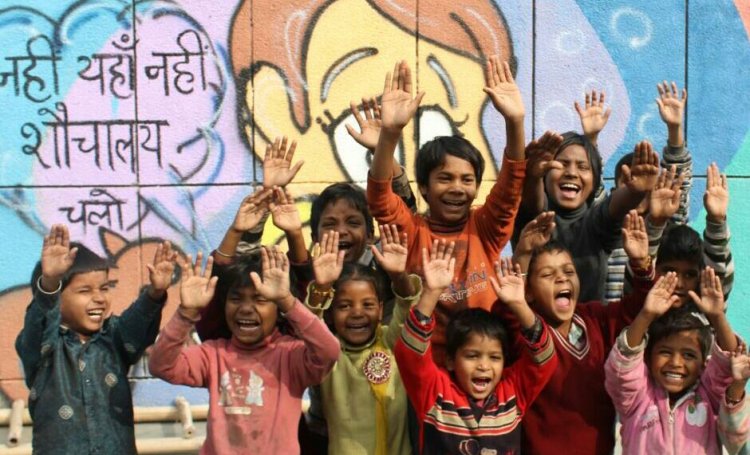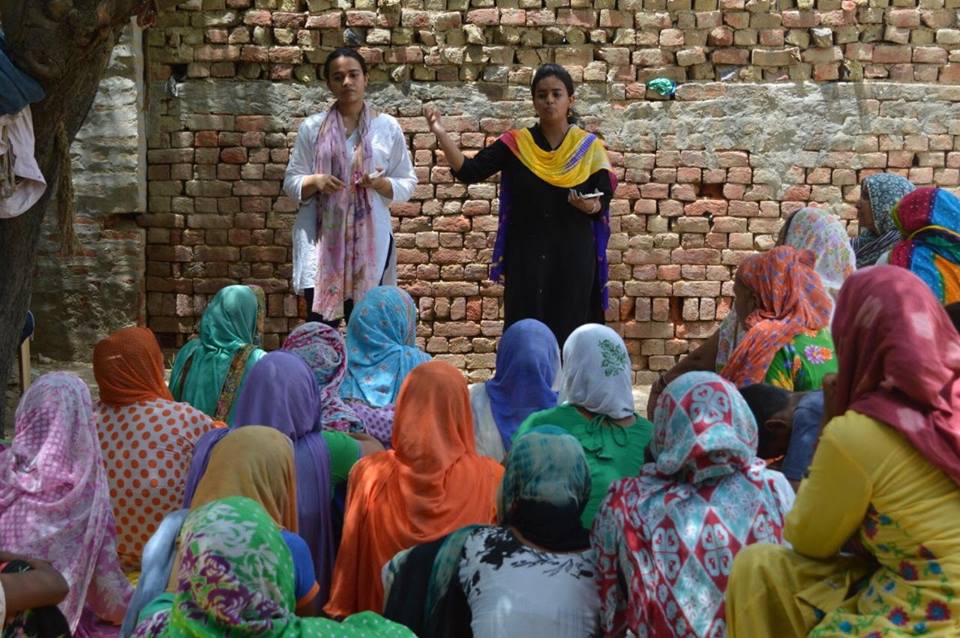Launched in 2015, Project Raahat, an initiative by students of a management institute, Shaheed Sukhdev College of Business Studies (SSCBS), Delhi University has been working on eradicating open defecation and providing safe sanitation in urban slums of India. They do this through innovations in management and operations of community toilet complexes and sensitising people on safe sanitary practices. The project is a part of Enactus, a global non-profit organisation. The Enactus SSCBS team comprises over 70 students and about 20 of them are directly involved in Project Raahat.
The model
Project Raahat aims at standardising and streamlining the procedures of operating, maintaining and monitoring community toilet complexes, ensuring proper implementation and enforcement of sanitation-related policies. The project went through various versions.
-
Project Raahat started its operations with the Version 1.0. This included basic daily operations, infrastructural innovations like aesthetic modification and incorporation of normal pay per use model. The subsequent versions included some additions or improvements to the current model.
-
Version 2.0 covered the commencement of open defecation campaigns, pass system, public address system and posters.
-
Version 3.0 was focused on targeted sensitisation, ticket system, circulation of a helpline number and technological innovation like the people’s counter to avoid pilferage.
-
Version 4.0 covered another pillar of Project Raahat i.e. monitoring of community toilet complexes in order to ensure proper upkeep of operations.
Community toilets can serve as a tool for bringing in behavioural change
In cities, as onsite sanitation option, urban local bodies have constructed community toilets. Community toilets not only provide sanitation facility but also have a demonstrative effect—people using these become habitual users of toilets, and in turn, realise the need for individual household toilets. Community toilets, thus, are the tools for bringing about behavioural changes among the public residing in the slum areas as well as in generating a demand for the use of individual toilets.

Sizeable investment has been made for the construction of community toilets but they have become either hazardous, unhygienic or abandoned due to poor construction and planning or lack of water supply and poor maintenance. Community toilets are specifically important for slums, especially where it may not be possible to construct individual household toilets due to the non-availability of space. It is not enough to just construct these, their operations and maintenance need to be strengthened, too.
Replicating the Raahat model designed for community toilet complexes to public toilets would require a certain degree of customisation. Aesthetic modifications would be based on generalised themes rather than community specific ones. The ticket and pass system need not be implemented as the population using a public toilet is always floating. Public address system can be employed to undertake passive sensitisation on proper usage of toilets for the floating population.
A viable financial model?
The time required for the toilet complex’s revenue to break even with expense depends on numerous demographic factors like the population of the community, their economic status and their average income. But within a period of six months (approx), the capital expenditure should ideally be recovered and the organisation should start earning profits. The expense for infrastructural changes is calculated and spread over a period of the useful life of the toilet complex to arrive at a depreciation rate annually. Since the rate charged for the usage of the complex cannot be changed, the cost is covered by the increased usage due to these changes (as a part of passive sensitisation). Vandalism and wear and tear costs are met by the reserves created by depreciating a part of the capital expenditure every year to avoid a situation of unanticipated deficit.
In case the policy of the government prohibits the complex owners from charging the users such as in Delhi, the government becomes the customer of the NGO, paying per seat. In this case, revenue can be increased by acquiring more complexes.

Awareness raising and sensitisation are important
Weekly or bi-weekly sensitisation camps focus on the importance of sanitation at home and in the community. This intervention can be systematically reduced after a few months but not terminated till the target sensitisation levels are achieved.
The Raahat model imparts wholesome skill learning to caretakers—from basic arithmetic and bookkeeping to soft skill training for personality enhancement. Raahat also tries to reduce employee absenteeism and turnover rate.
Raahat focuses on improving user experience to increase usage of the toilet complex. In terms of increased footfall and reduced vandalism, sensitisation camps usually bear results in two to three months. However, community sanitation is a continuous process, bearing visible results of a cleaner community in about six months with regular intervention.
Metrics for evaluating the benefits to the community after sensitisation sessions include increase in footfall, increased demand of sanitary products in local general store, increased demand of soaps in the complex and other activity specific metrics.
Whereas Sulabh toilet complexes are meant for public usage, Raahat specialises in community toilet complexes. Infrastructural modifications, sensitisation camps and innovation in operations are a few of the parameters which set the two apart. Through demographic specific camps like customised games for children, hygiene workshops for women and group discussions for men, it perpetuates cleanliness and healthy habits.
Community ownership is vital to ensure proper functioning and reduced vandalism in a community toilet complex. It is built by involving the community during aesthetic modification of the complex (through hand paintings on the wall by children, painting Bollywood and cartoon characters popular in the community etc), converting open spaces around the complex into community socialising hubs and conducting sensitisation camps focusing on the importance of the community complex built in the area.
About the SOP
As a part of Project Raahat, a Standard Operating Procedure (SOP) was developed on ending open defecation and to defeat social stigma. The SOP analyses status of community toilets in terms of its infrastructure, operation and maintenance, uses, level of awareness and payment of user charges. The idea is to replicate the Raahat model across India for maintaining community toilet complexes. The document lists down certain steps that should be followed to enhance user experience, improve impact of operations and sensitisation activities, deal with government authorities and various other dimensions.













